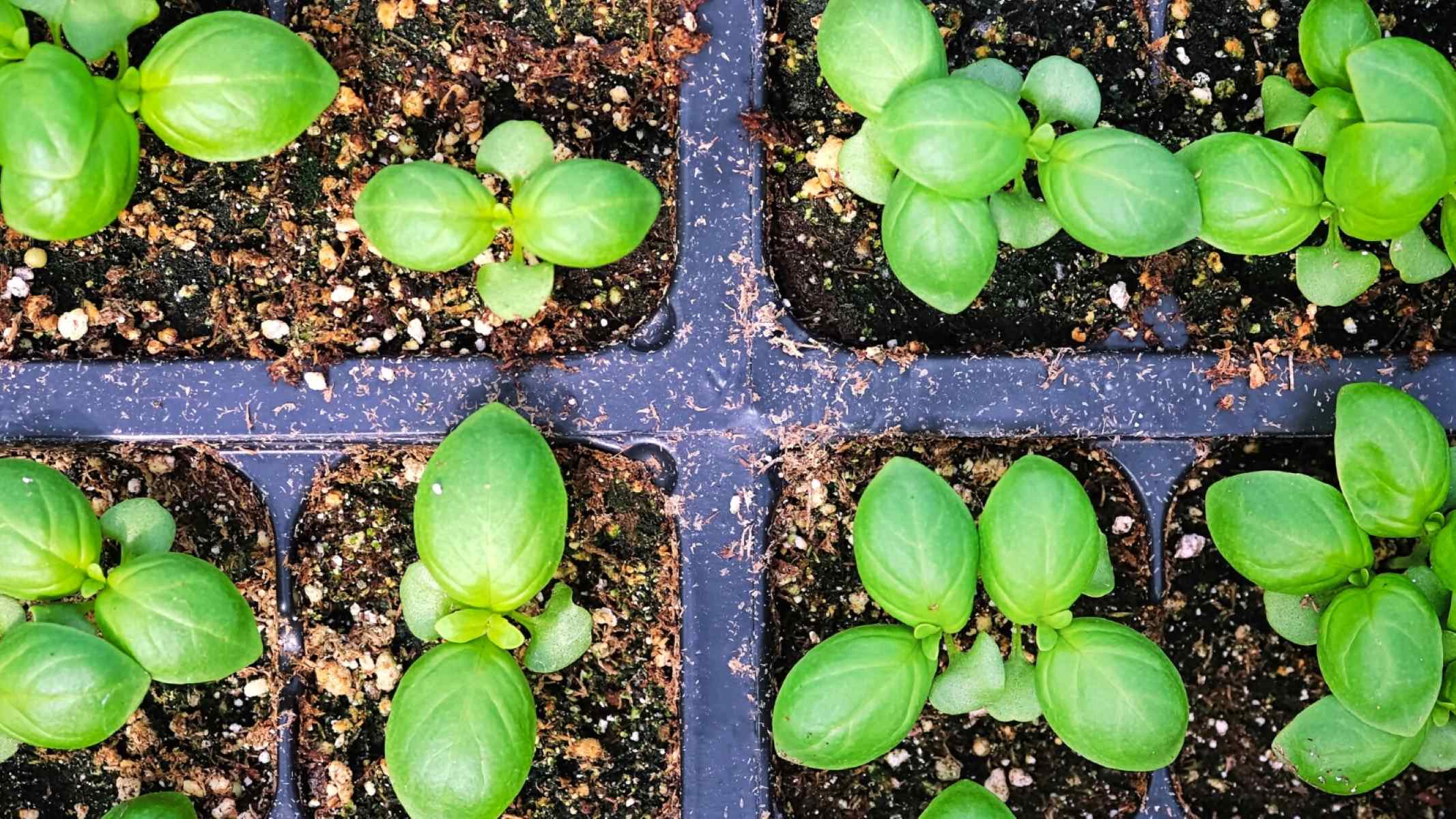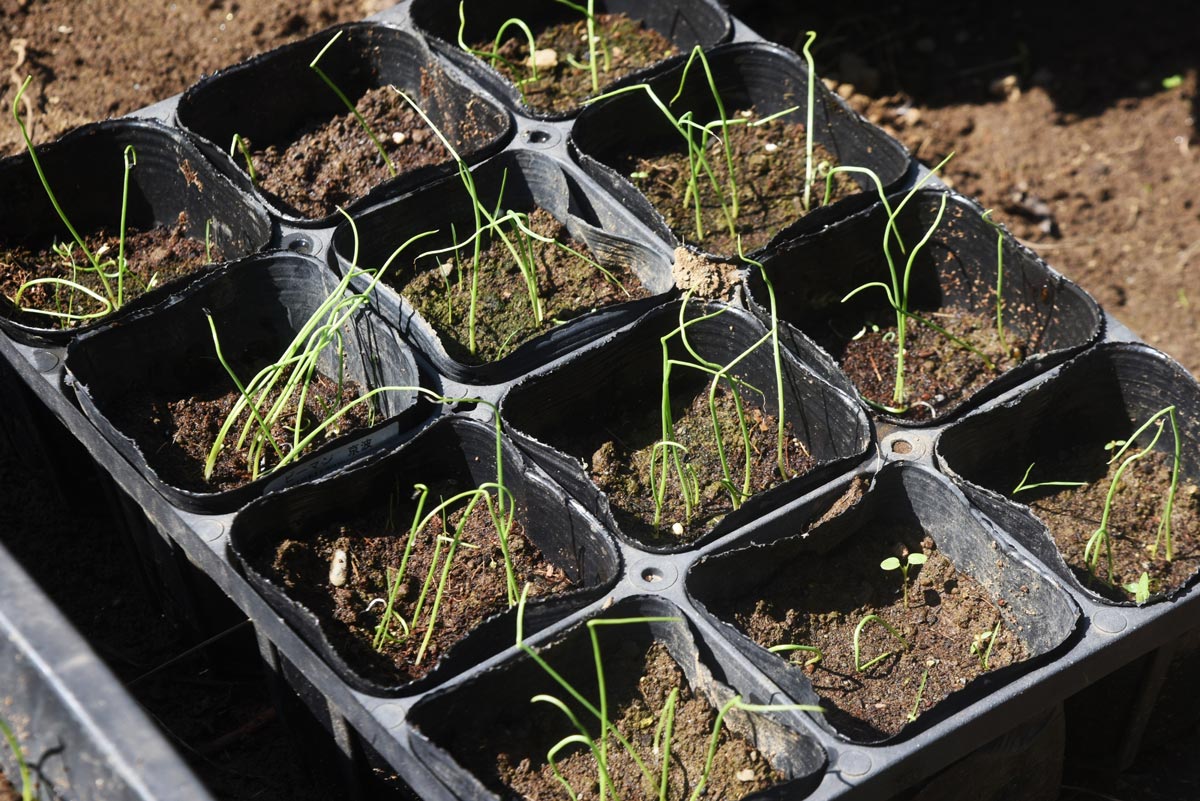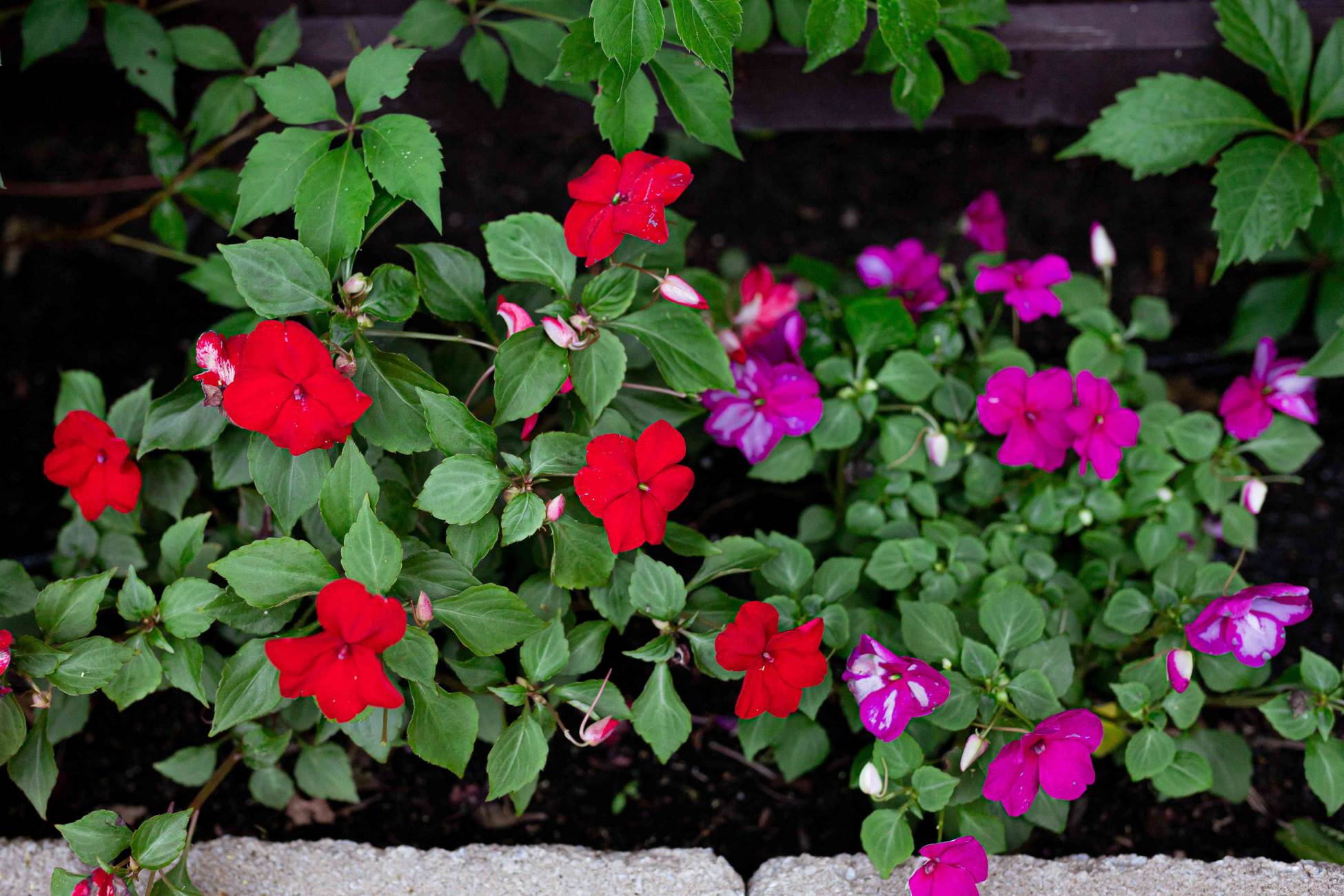Home>Garden Essentials>How To Sow Snapdragon Seeds


Garden Essentials
How To Sow Snapdragon Seeds
Modified: March 24, 2024
Learn how to sow Snapdragon seeds in your garden with these easy step-by-step instructions. Create a beautiful and vibrant garden with Snapdragon flowers!
(Many of the links in this article redirect to a specific reviewed product. Your purchase of these products through affiliate links helps to generate commission for Storables.com, at no extra cost. Learn more)
Introduction
Welcome to the world of gardening! If you’re a beginner or a seasoned gardener looking to add a splash of color and charm to your outdoor space, growing snapdragon plants from seeds is a great choice. With their vibrant blooms and graceful spikes, snapdragons (Antirrhinum majus) are a favorite among gardeners for their beauty and versatility.
In this article, we will guide you through the process of sowing snapdragon seeds to help you achieve successful germination and establishment of these stunning flowers. From selecting the right variety to caring for the seedlings, we will cover everything you need to know to grow healthy and thriving snapdragons.
So, let’s roll up our sleeves and get started on this exciting gardening journey!
Key Takeaways:
- Choose the right snapdragon variety based on height, color, and bloom time to create a beautiful garden or container display that suits your preferences and gardening goals.
- Provide proper care by watering, fertilizing, and monitoring for pests and diseases to ensure healthy and vibrant snapdragon plants that bring beauty to your garden throughout the growing season.
Read more: How To Save Snapdragon Seeds
Choosing the Right Variety
When it comes to choosing snapdragon varieties, you’ll find a wide range of options to suit your preferences and gardening needs. Here are a few factors to consider when selecting the right variety:
- Height: Snapdragons come in various heights, ranging from dwarf varieties around 6-8 inches tall to tall varieties that can reach up to 3 feet. Consider the height that will work best in your garden or container.
- Color: Snapdragons are available in an array of stunning colors, including shades of pink, purple, red, yellow, orange, and white. Think about the color palette you want to incorporate into your garden design.
- Bloom Time: Some snapdragons bloom early in the season, while others bloom later. Consider the desired bloom time to ensure a continuous display of flowers throughout the growing season.
- Single or Double Flowers: Snapdragons can have single or double blooms. Single-flowered varieties have a classic, open-faced shape, while double-flowered varieties have multiple layers of petals, creating a fuller look.
Some popular snapdragon varieties include:
- Sonnet Series: This series features compact plants with an abundance of colorful blooms. It comes in various heights and colors, making it suitable for both borders and containers.
- Madame Butterfly Series: Known for their unique, fluted flowers, the Madame Butterfly series adds a touch of elegance to any garden. These varieties have a longer bloom time and come in a range of colors.
- Rocket Series: If you’re looking for tall snapdragons with vibrant, large blooms, the Rocket series is an excellent choice. They are perfect for adding vertical interest to gardens or for cutting and creating beautiful arrangements.
Take your time to explore the different varieties available and select the ones that align with your gardening goals and preferences. Remember to check the seed packets or online descriptions for specific details on each variety’s growing requirements.
Preparing the Soil
Before sowing snapdragon seeds, it’s essential to prepare the soil to create an optimal growing environment for your plants. Here are some steps to follow:
- Choose a Well-draining Location: Snapdragons prefer well-draining soil to prevent root rot. Select a location in your garden that receives full sun to partial shade for optimal growth.
- Clear the Area: Remove any weeds, rocks, or debris from the planting area to ensure that the snapdragon seeds have ample space to grow and thrive.
- Loosen the Soil: Use a garden fork or a tiller to loosen the soil to a depth of about 6-8 inches. This will help improve drainage and allow the snapdragon roots to penetrate the soil easily.
- Amend the Soil: If your soil is heavy or clayey, mix in some organic matter like compost or well-aged manure to improve its texture and provide essential nutrients for the plants. Aim for a well-balanced soil pH of around 6.0-7.0.
- Level and Rake the Soil: Smooth out the soil surface with a rake to create a uniform bed for sowing the snapdragon seeds. This will help ensure even germination and seedling growth.
By preparing the soil adequately, you are setting the stage for healthy root development and robust snapdragon plants.
It’s important to note that snapdragons can also be grown in containers. If you choose to grow them in pots or containers, select a well-draining potting mix specifically formulated for flowers and ensure the container has drainage holes to prevent waterlogging.
Now that your soil is ready, it’s time to move on to the next step: germinating the snapdragon seeds.
Germinating Snapdragon Seeds
The key to successful germination of snapdragon seeds is providing the right conditions for them to sprout. Here’s how to germinate your snapdragon seeds:
- Stratification: Snapdragon seeds benefit from a process called stratification, which mimics the natural conditions seeds experience during winter. To stratify the seeds, place them in a sealed plastic bag with a slightly moistened paper towel or vermiculite. Place the bag in the refrigerator for about 7-10 days.
- Pre-soaking: After stratification, soak the seeds in room temperature water for 24 hours. This helps to further soften the seed coat and promote germination.
- Seedling Trays: Fill seedling trays or small pots with a well-draining seed-starting mix. Moisten the mix before planting the seeds to ensure good contact between the seeds and the soil.
- Sowing: Sow the pre-soaked snapdragon seeds on top of the soil, gently pressing them into the surface. Aim for a spacing of about 1 inch between the seeds.
- Cover and Mist: Lightly cover the seeds with a thin layer of seed-starting mix or vermiculite. Mist the surface with water to settle the seeds in place.
- Warm and Humid Environment: Place the seedling trays in a warm location with temperatures around 70-75°F (21-24°C). Use a plastic dome or plastic wrap to create a humid environment for the seeds.
- Light: Snapdragon seeds require light to germinate, so place the trays in a location where they will receive bright, indirect light. Avoid direct sunlight, as it can cause overheating.
- Watering: Keep the soil consistently moist, but not soggy, throughout the germination process. Check the trays regularly and mist with water as needed to maintain moisture levels.
- Germination: Snapdragon seeds usually germinate within 10-14 days. Once the seedlings have emerged, remove the plastic dome or plastic wrap to prevent excessive moisture and promote air circulation.
By following these steps, you will increase the chances of successful germination and have healthy snapdragon seedlings ready for the next stage: sowing the snapdragon seeds in the garden or containers.
Sowing Snapdragon Seeds
Once your snapdragon seeds have germinated and the seedlings are well-established, it’s time to transplant them into the garden or containers. Here’s how to sow your snapdragon seeds:
- Prepare the Planting Area: Choose a location in your garden that receives full sun to partial shade. Ensure the soil is well-draining and has been prepared by removing weeds and amending it with organic matter.
- Transplanting Seedlings: Gently remove the snapdragon seedlings from the seedling trays, being careful not to damage the delicate roots. Transplant them into prepared holes in the garden, spacing them about 8-12 inches apart to allow for proper airflow and growth.
- Container Planting: If you prefer to grow snapdragons in containers, select a container with good drainage and fill it with a well-draining potting mix. Plant the seedlings, leaving enough space between plants to accommodate their mature size.
- Watering: After transplanting, give the seedlings a thorough watering to settle them into the soil. Maintain regular watering throughout the growing season, ensuring the soil remains consistently moist but not waterlogged.
- Mulching: Apply a layer of organic mulch around the base of the snapdragon plants to help conserve moisture, suppress weed growth, and regulate soil temperatures. Leave a small gap around the stems to prevent stem rot.
- Support: Taller snapdragon varieties may benefit from staking or using plant supports to keep them upright and prevent them from bending or breaking under the weight of flowers.
- Deadheading: To encourage continuous blooming, remove faded flowers by pinching or cutting them off. This practice, known as deadheading, promotes the growth of new buds and extends the blooming period.
Remember to monitor the plants regularly for pests, diseases, and nutrient deficiencies. Address any issues promptly to ensure the health and vigor of your snapdragon plants.
Snapdragons generally require a growing season of 12-16 weeks from planting to bloom. With proper care and attention, you’ll soon be rewarded with a beautiful display of vibrant snapdragon flowers in your garden or containers.
Sow snapdragon seeds in well-draining soil, lightly pressing them into the surface. Keep the soil consistently moist and place in a sunny spot. Transplant seedlings once they have 2-3 sets of leaves.
Read more: How To Start Snapdragon Seeds
Caring for Snapdragon Seedlings
Once you have transplanted your snapdragon seedlings, it’s important to provide proper care to ensure their healthy growth and development. Here are some key aspects to consider when caring for snapdragon seedlings:
- Watering: Keep the soil consistently moist, but not soggy. Water the seedlings deeply at the base, avoiding overhead watering as wet foliage can lead to disease. Aim to provide about 1 inch of water per week, adjusting as needed based on rainfall and soil conditions.
- Fertilization: Feed the snapdragon seedlings with a balanced, slow-release fertilizer or apply a liquid fertilizer diluted according to the manufacturer’s instructions. Start fertilizing once the seedlings have established and continue every 4-6 weeks throughout the growing season.
- Sun Exposure: Snapdragon plants thrive in full sun to partial shade conditions. Ensure they receive at least 6 hours of direct sunlight daily for optimal growth and flowering. In hot climates, some afternoon shade may help prevent stress and wilting.
- Weed Control: Regularly check the planting area for weeds and remove them promptly to reduce competition for nutrients and water. Mulching around the snapdragon seedlings can help suppress weed growth and conserve moisture.
- Pruning: To maintain a compact and tidy appearance, pinch back the tips of the snapdragon plants when they reach about 6-8 inches in height. This encourages branching and creates bushier plants with more blooms.
- Support: As the snapdragons grow taller, providing support such as staking or using plant supports can prevent them from bending or breaking under the weight of flowers or during strong winds.
- Pest and Disease Management: Monitor the seedlings for common pests like aphids, snails, and slugs. Treat any pest issues using organic pest control methods or insecticidal soaps. Watch out for signs of diseases like powdery mildew or rust, and address them promptly using appropriate treatments.
Regularly inspect the seedlings for any signs of nutrient deficiencies, such as yellowing leaves or stunted growth. Adjust the fertilization regimen or soil amendments as necessary to provide the essential nutrients needed for healthy plant growth.
By providing the right care, your snapdragon seedlings will flourish into strong and vibrant plants, ready to grace your garden with their beautiful blooms.
Transplanting Snapdragon Seedlings
Transplanting snapdragon seedlings is an important step in their growth journey. Follow these guidelines to ensure a successful transition from seedling trays to the garden or containers:
- Timing: Transplant snapdragon seedlings after the last frost date in your area when the soil has warmed up and the threat of frost has passed. This is usually in late spring or early summer.
- Preparing the Planting Site: Choose a well-draining location that receives full sun to partial shade for optimal growth. Prepare the soil by loosening it and removing any weeds or debris. Incorporate organic matter like compost or well-aged manure to enrich the soil.
- Watering the Seedlings: Before transplanting, give the seedlings a thorough watering to ensure their root systems are well-hydrated and can withstand the stress of transplantation.
- Transplanting: Gently remove the snapdragon seedlings from their seedling trays, being careful not to damage the delicate roots. Dig holes in the prepared soil that are slightly larger and deeper than the root balls of the seedlings.
- Spacing: Space the seedlings about 8-12 inches apart to allow for proper airflow and optimal growth. This spacing will also prevent overcrowding and reduce the risk of disease.
- Planting Depth: Place each seedling into the prepared hole, ensuring that the top of the root ball is level with or slightly above the soil surface. Gently backfill the hole with soil, lightly firming it around the base of the seedling.
- Watering: After transplanting, water the seedlings thoroughly to settle the soil and eliminate any air pockets around the roots. Water at the base of the plants and avoid wetting the foliage excessively.
- Mulching: Apply a layer of organic mulch, such as straw or wood chips, around the base of the snapdragon seedlings. Mulching helps conserve moisture, suppresses weed growth, and regulates soil temperature.
- Caring for Transplanted Seedlings: Monitor the transplanted seedlings for the first few days and make sure they are adjusting well to their new environment. Provide regular waterings as needed to keep the soil consistently moist.
- Staking: Taller snapdragon varieties may require staking or using plant supports to keep their stems upright and prevent bending or breaking. Install the supports early to avoid disturbing the roots later.
Keep a close eye on the transplanted snapdragon seedlings, ensuring they receive adequate sunlight, water, and nutrients. With proper care, they will quickly establish themselves and begin to grow, bringing beauty and color to your garden or containers.
Maintaining Snapdragon Plants
To ensure the health and longevity of your snapdragon plants, regular maintenance is essential. Here are some key practices to incorporate into your routine:
- Watering: Snapdragons require regular watering to keep the soil consistently moist. Water deeply at the base of the plants when the top inch of soil feels dry. Avoid overhead watering to minimize the risk of foliar diseases.
- Fertilization: Feed snapdragon plants with a balanced, slow-release fertilizer every 4-6 weeks during the growing season. Alternatively, use a liquid fertilizer diluted according to the manufacturer’s instructions. This will provide the necessary nutrients for healthy growth and prolific flowering.
- Deadheading: Remove spent flowers by pinching or cutting them off to encourage continuous blooming. Deadheading prevents the plant from diverting energy to seed production, allowing it to focus on producing more flowers.
- Pruning: Monitor the snapdragon plants for any signs of legginess or congestion. To maintain a neat and compact appearance, selectively prune back long or unruly stems. Pruning also helps improve air circulation, reducing the risk of disease.
- Support: Tall snapdragon varieties may require staking or the use of plant supports. Install stakes or supports early on to provide necessary support and prevent the stems from bending or breaking under the weight of the flowers.
- Mulching: Apply a layer of organic mulch, such as straw or bark chips, around the base of the snapdragon plants. Mulch helps retain moisture, suppresses weeds, and regulates soil temperature.
- Pest and Disease Control: Regularly inspect the plants for common pests such as aphids, slugs, or snails. If you notice any infestation, treat it promptly with organic pest control methods or insecticidal soaps. Monitor for signs of diseases like powdery mildew or rust and take appropriate measures to prevent their spread.
- Supporting the Stem: As the snapdragon stems grow taller, you may need to use plant ties or twine to provide additional support, especially in windy areas. This will prevent the stems from bending or snapping.
- Protecting from Extreme Temperatures: Snapdragons may struggle in very hot summer temperatures or during severe frost. Consider providing shade or using frost covers to shield the plants during extreme weather conditions.
Regularly monitor your snapdragon plants for any signs of stress, nutrient deficiencies, or pest and disease issues. Address problems promptly to ensure the continued health and vitality of your snapdragons.
By implementing these maintenance practices, you’ll enjoy vibrant and flourishing snapdragon plants that bring beauty and charm to your garden throughout the growing season.
Troubleshooting Common Issues
While snapdragons are generally resilient plants, they may encounter some common issues during their growth. Here are some troubleshooting tips to address these problems:
- Poor Flowering: If your snapdragons are not producing many flowers, it could be due to inadequate sunlight, a nutrient deficiency, or over-fertilization. Ensure your plants receive at least 6 hours of direct sunlight daily and adjust the fertilizer application to provide balanced nutrition without excess nitrogen.
- Pest Infestation: Common pests that may affect snapdragons include aphids, snails, and slugs. Monitor your plants regularly and utilize organic pest control methods or insecticidal soaps to control infestations. Encouraging natural predators can also help keep pest populations in check.
- Disease: Snapdragons can be susceptible to diseases such as powdery mildew or rust. Practice good airflow by providing adequate spacing between plants and avoid overhead watering. If disease symptoms appear, apply appropriate fungicides or remove infected plant parts to prevent the spread of the disease.
- Wilting or Dying Seedlings: If your snapdragon seedlings are wilting or dying, it may be due to overwatering, underwatering, or planting them in poorly draining soil. Adjust your watering practices to maintain appropriate moisture levels, ensure proper drainage, and amend the soil with organic matter if necessary.
- Leggy Growth: Leggy growth, characterized by long and weak stems, may occur if snapdragons do not receive enough sunlight. Provide adequate sunlight or consider selecting more compact or dwarf varieties that are better suited for limited sun conditions.
- Fading Flower Colors: If the vibrant colors of your snapdragon flowers are fading, it could be due to extreme heat or lack of nutrients. Provide shade during hot periods or ensure proper fertilization to supply essential minerals and maintain healthy flower coloration.
- Soil pH Imbalance: Snapdragons prefer slightly acidic to neutral soil with a pH between 6.0 and 7.0. Test your soil pH and adjust as needed by adding amendments such as lime to raise pH or sulfur to lower pH.
By promptly addressing these common issues, you can mitigate any problems that may arise and help your snapdragons thrive. Regular monitoring and proactive care will ensure that your snapdragon plants reach their full potential and provide a stunning display of beautiful blooms.
Read more: How To Harvest Snapdragon Seeds
Conclusion
Congratulations! You have now become well-equipped with the knowledge and skills needed to successfully sow and grow snapdragon plants from seeds. These vibrant and charming flowers will bring beauty and color to your garden or containers throughout the growing season.
We started by guiding you through the process of choosing the right snapdragon variety, ensuring that you select the perfect height, color, and bloom time to complement your garden. We then delved into the essential steps of preparing the soil, germinating the seeds, and sowing them with care.
Transplanting the snapdragon seedlings into the garden or containers was the next step, followed by a comprehensive review of the necessary care and maintenance practices. From watering and fertilizing to deadheading and pruning, we covered everything to help your snapdragons thrive.
We also provided troubleshooting tips to address common issues that may arise, such as poor flowering, pest infestations, and diseases. By being proactive and addressing these issues promptly, you can ensure the continued health and vitality of your snapdragon plants.
Remember, gardening is an ongoing adventure filled with continuous learning and experimentation. Each season brings new opportunities to refine your techniques and grow your gardening skills. So, keep nurturing your snapdragons and enjoy the beauty they bring to your outdoor space.
Now it’s time to put your newfound knowledge into action. Get your hands dirty and start sowing those snapdragon seeds. Soon, you’ll be rewarded with a glorious display of snapdragon blooms that will undoubtedly bring joy and delight to both you and your garden visitors.
Happy gardening!
Frequently Asked Questions about How To Sow Snapdragon Seeds
Was this page helpful?
At Storables.com, we guarantee accurate and reliable information. Our content, validated by Expert Board Contributors, is crafted following stringent Editorial Policies. We're committed to providing you with well-researched, expert-backed insights for all your informational needs.














0 thoughts on “How To Sow Snapdragon Seeds”